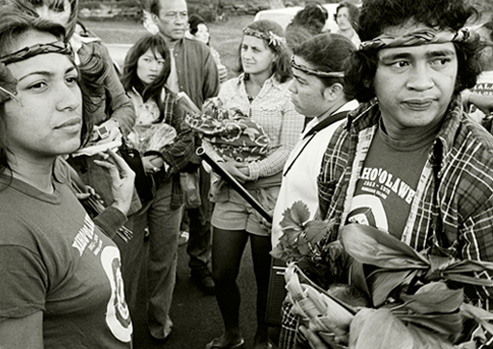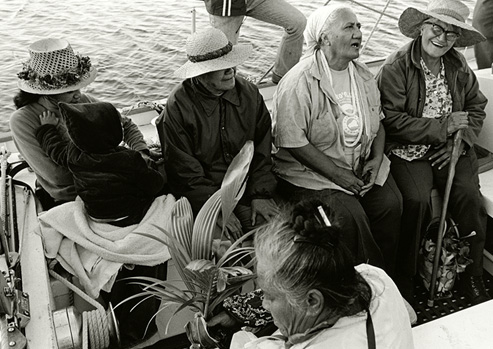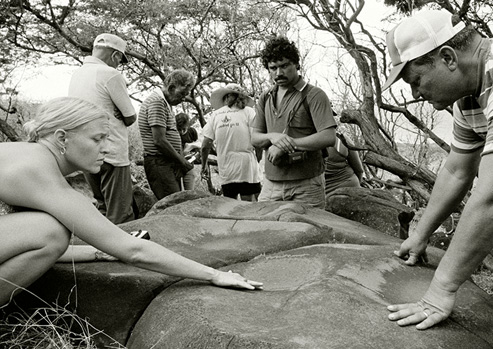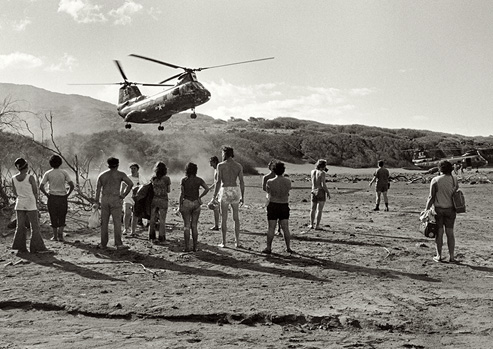Reclaiming the Island
-

Ceremony on Kanaloa Kaho‘olawe, 1976
Courtesy Franco Salmoiraghi
In January 1976, Native Hawaiians staged an occupation of Kanaloa Kaho‘olawe to draw national attention to injustices suffered by Native Hawaiians because of the illegal overthrow of the Hawaiian monarchy by U.S. Naval forces on January 17, 1893. They later formed the Protect Kaho‘olawe ‘Ohana (meaning family), to campaign against the bombing and military exercises. In March 1977, two of their members, George Helm and Kimo Mitchell, were lost at sea during an expedition. Other members of the organization were sentenced to imprisonment or barred from the island.
In 1980, four years after they began their campaign, the Protect Kaho‘olawe ‘Ohana partially settled a civil suit with the U.S. Navy. Under a “Consent Decree” the Navy was mandated to survey and protect the island’s historic and cultural sites; clear surface ordnance from 10,000 acres and limit the ordnance impact area to the central third of the island; begin soil conservation and re-vegetation programs; eradicate the goat population; and allow the Protect Kaho‘olawe ‘Ohana to regularly visit the island for cultural, religious, educational and scientific purposes.
On October 22, 1990, President George H. W. Bush directed the Secretary of the Navy to discontinue use of Kanaloa Kaho‘olawe as a weapons range. Title to the island was turned over to the State of Hawai‘i on 7 May 1994. From 10 November 1993 through 11 November 2003 the U.S. Navy spent $400 million to clear 68 percent of the island’s surface of unexploded ordnance and another 9 percent of the island to a depth of 4 feet. The State of Hawai‘i manages the island as a cultural reserve for the perpetuation of Native Hawaiian cultural, religious and subsistence practices for eventual transfer to the sovereign Hawaiian entity when it is re-established and recognized by the federal and state governments.
-

Native Hawaiian kūpuna (elders) traveling to the island to identify sacred sites, 1976
Courtesy Franco Salmoiraghi
-

An adze grinding stone at Hakioawa, location of the largest historic community on Kanaloa Kaho‘olawe.
Courtesy Franco Salmoiraghi
-

The US military arrives to remove the occupiers, 1976
Courtesy Franco Salmoiraghi






